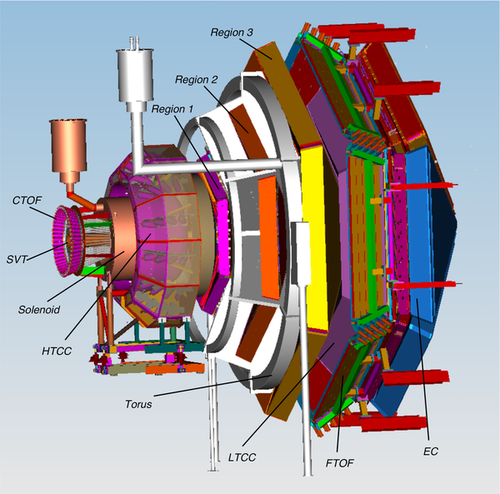Difference between revisions of "Engineering Run"
Jump to navigation
Jump to search
| Line 146: | Line 146: | ||
# '''The main lights in the Hall(dome lights) and the Forward Carriage lights are being kept off because of light leaks affecting some of the detectors. If these lights are switched on during an access, they should be switched off when leaving the Hall. Note that the dome lights when switched off cannot be turned back on immediately because they require 10-15 min to cooldown." | # '''The main lights in the Hall(dome lights) and the Forward Carriage lights are being kept off because of light leaks affecting some of the detectors. If these lights are switched on during an access, they should be switched off when leaving the Hall. Note that the dome lights when switched off cannot be turned back on immediately because they require 10-15 min to cooldown." | ||
# '''Do not run more than 60 minutes above 30 nA without the beam blocker in front of Faraday cup. Put beam blocker in for long running at high currents.''' | # '''Do not run more than 60 minutes above 30 nA without the beam blocker in front of Faraday cup. Put beam blocker in for long running at high currents.''' | ||
| + | # '''Turn DC HV off only for beam tuning; if no beam is available or when beam is stable, keep them on even if you are not taking data. | ||
# '''In case of loss of communication with IOCBTARG, follow instructions at https://logbooks.jlab.org/entry/3502218''' | # '''In case of loss of communication with IOCBTARG, follow instructions at https://logbooks.jlab.org/entry/3502218''' | ||
<!--# '''If DAQ crashed/broken: Follow instruction on Documentation tab. If cannot resolved in 20-30 min call DAQ on-call cell phone.'''---> | <!--# '''If DAQ crashed/broken: Follow instruction on Documentation tab. If cannot resolved in 20-30 min call DAQ on-call cell phone.'''---> | ||
Revision as of 19:54, 12 December 2017
[edit]
Shift ScheduleShift ChecklistHot CheckoutBeam Time Accounting |
Manuals |
Procedures |
JLab Logbooks
|
|
| |||||||||||||||||||||||||||||||||||||||||||||||||||||||||||||||||||||||||||||||||||||||||||||||||||
- Note, all non-JLab numbers must be dialed with an area code. When calling from a counting-house landline, dial "9" first.
- To call JLab phones from outside the lab, all 4-digit numbers must be preceded by 757-269
- Click Here to edit Phone Numbers. Note, you then also have to edit the current page to force a refresh.
Click Here to edit Phone Numbers. Note, you then also have to edit this page to force a refresh.
CLAS12 Engineering Run, Fall 2017
Beam energy 10.6 GeV (5 pass)
Important: Document all your work in the logbook!
RC: Raffaella DeVita
- (757) 575-7540
- 9 575 7540 from Counting Room
- devita@jlab.org
PDL: Eugene Pasyuk
- (757) 876-1789
- 9 876-1789 from Counting Room
- pasyuk@jlab.org
Run Plan:
|
General Instructions:
|
Every Shift:
|
Every Run:
|
|---|
Webcams |
Manuals |
Epics on the web
|
